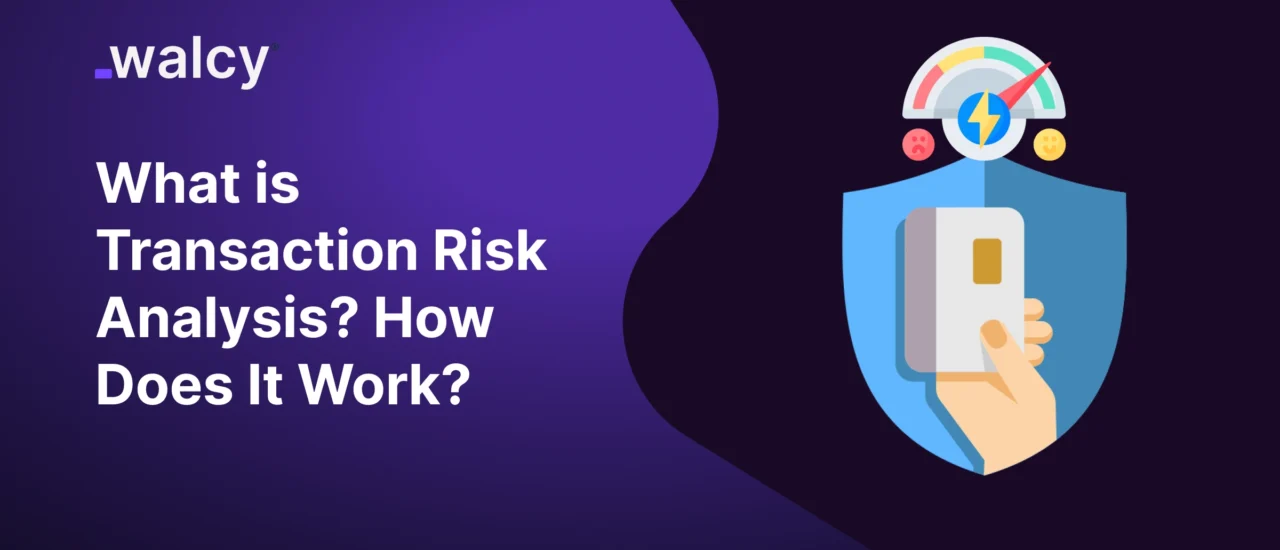In the contemporary financial environment, when a business knows no borders and the pace of the transactions has grown to high speeds, security, and accuracy have turned out to be of the essence.
It is in this respect that Transaction Risk Analysis enters.
The process of identification, assessment, and mitigation of risks that might arise with a financial transaction provides TRA with an effective method to enhance security and prevent fraud.
The following comprehensive guide covers what transaction risk analysis is, its purpose, methods, and benefits.
It also covers some examples of transaction risk, the importance of transaction risk in banking, and its role in foreign exchange.
What is Transaction Risk Analysis?
An analytical procedure whereby the risks regarding any financial transaction are gauged through a step-by-step analysis.
This helps to discover its probable weaknesses, if any, for complete adherence to the regulations and to make the financial operations secure from fraudulent and undesirable transactions.
TRA finds its application in sectors such as banking, e-commerce, and payment gateways that need to avoid unauthorized access, fraudulent transactions, and money laundering.
Key Components of Transaction Risk Analysis
Data Collection
TRA starts with gathering relevant data regarding transactions that include the amount of payment, geographical location, information about the device, and history of previous transactions.
Risk Scoring
Each transaction is assessed and given a risk score based on predetermined criteria. For example, suspiciously high-value transactions or payments coming from high-risk areas may raise a higher risk score.
Real-Time Monitoring
Modern TRA systems can track the transactions in real-time for their potential threats.
Flag Suspicious Activities
Suspicious transactions are thereby flagged for further investigation. This helps stop unauthorized payments from going through.
Automated Decisions
Advanced TRA systems employ AI and machine learning to decide instantly whether to accept or reject a transaction, or to hold it for manual review.
Read about: International Payment Fraud: Ultimate Guide For Businesses.
How Does Transaction Risk Analysis Work?
TRA involves the following processes:
Input Data Gathering
The inputting of data includes but is not limited to transaction history, user behavior, device IP, and geolocation.
Risk Evaluation Models
The system uses algorithms and AI to evaluate the information against risk models for anomalies.
Real-time Decision Making
Based on the risk score, the transaction is either approved, rejected, or routed for manual review.
Compliance Check
The solution ensures that all transactions are AML and KYC compliant.
After-Transaction Analysis
The analysis of transactions that have taken place makes one privy to any emerging trends and allows for optimizations of future risk analytics processes.
Examples of Transaction Risks
Understanding TRA is better described through the following examples of commonly occurring transaction risks:
P2P’s unusual spending habits
A user who usually spends $50-$100 initiates a $5,000 transaction, which raises a red flag.
Geographic mismatch
A payment was performed from a location not matching the usual geographic pattern for that user.
High-risk countries
Transactions that involve countries marked with high financial crime may need to undergo further verification.
Suspicious account activity
Multiple transactions in a short length of time, or attempting to work around such checks can also raise alerts.
Currency Fluctuations
During foreign exchange transactions, abrupt fluctuation in the currency’s value creates risk in any given transaction.
Transaction Risk in Banking
Within a bank, TRA is highly crucial in safeguarding banks and customers against numerous kinds of fraud as well as other forms of operational hazards.
Transaction risks in banking come usually from sources such as:
Identity Fraud
Scammers try to transact something by using fraudulently acquired identities.
Cross-Border Payment
International transactions are intrinsically riskier because of regulatory environments and the possibility of fluctuating currency.
Money Laundering
TRA ensures AML guideline compliance by identifying suspicious patterns of fund movement.
Credit Risks
Creditworthiness of a customer before approving any transaction is one of the important banking functions.
What is Transaction Risk in Foreign Exchange?
Transaction risk in foreign exchange is the possibility of a financial loss a business is exposed to because of changes in the currency exchange rate between the beginning of a transaction and its settlement.
For example, if a U.S.-based company agrees to pay a European supplier €100,000 in 30 days, the dollar cost may change with the movement of the exchange rate.
How to Manage Foreign Exchange Risks:
- Hedging: Through forward contracts, an exchange rate is fixed.
- Real-Time Monitoring: Continuous analysis of currency markets would definitely create a possibility of predicting potential risks.
- Risk Diversification: The risk of dependency on one currency can be minimized by diversifying trading currencies.
Benefits of Transaction Risk Analysis
The benefits of TRA to businesses and FIs include the following:
- Enhanced Security
Fraud is reduced as TRA detects and blocks suspicious activities.
- Customers’ Trust
Secure and smooth transactions increase their confidence.
- Compliance with Regulations
Automated TRA systems avoid financial regulatory compliance, reducing the risk of penalties.
- Operational Efficiency
Automation of risk analysis minimizes the need for manual interference, hence saving time and resources.
- Less Chargebacks
By identifying high-risk transactions, businesses can reduce chargebacks and associated costs.
- Insights and Reporting
TRA systems provide detailed analytics, enabling businesses to make data-driven decisions.
Role of Transaction Risk Investigators
Transaction risk investigators are professionals responsible for reviewing flagged transactions and determining their authenticity.
Their responsibilities include:
Analyzing Risk Patterns
Investigators analyze flagged transactions to identify common patterns of fraud or risk.
Manual Review
Where the system cannot resolve the transaction automatically, an investigator does an in-depth review for validity.
Collaboration
They liaise with the compliance teams to ensure that all of the flagged transactions meet the requirements from the regulatory perspective.
Reporting
Investigators generate reports on suspicious activities and present these reports to relevant authorities or management.
Sophisticated Tools for Transaction Risk Analysis
To carry out the TRA process, most businesses and financial institutions apply sophisticated tools such as:
- AI-Powered Systems
The machine learning algorithms enhance their predictive accuracy by continuously learning from historic transactions.
- Fraud Detection Software
To identify and control fraudulent cases, some tools used are Fraud.net and Kount.
- Real-time Analytics Platforms
Dynamic risk data monitoring and visualization with Tableau/Power BI
- Banking Solution
Each bank would have a tailored version of a TRA system integrated into the core banking platform to provide a seamless analysis of credit risks.
Read about: Online Banking Security: A Comprehensive Overview”
Conclusion
Transaction Risk Analysis is an integral part of modern financial operations.
TRA strengthens security, compliance, and the ability to engender customer trust by recognizing and mitigating any potential risks in real-time.
Whichever the business type, be it banking, foreign exchange, or e-commerce, there is no option not to have an effective TRA system in place for those businesses that want to thrive in today’s digital economy.
TRA, if well understood and applied together with sophisticated tools, enables businesses to take measures for not only protecting themselves from financial risks but also ensuring seamless and secure customer experiences.
FAQs
Which other industries, except banking and e-commerce, have started the use of TRA?
Newer industries that are coming forward in the race to adopt TRA for prevention against financial fraud and theft of sensitive data include healthcare, real estate, and gig economy platforms.
Examples include:
- Health Care: To secure patient payments and detect insurance fraud
- Real Estate: To ensure compliance in high-value property transactions
How does TRA help in combating synthetic identity fraud?
Synthetic identity fraud is all about creating identities with both real and fabricated information.
TRA searches for inconsistencies in user behavior, payment patterns, and geolocation to flag such fraudulent accounts.
What role does behavioral biometrics play in TRA?
An increasing number of TRA systems incorporate additional layers of fraud detection through the use of behavioral biometrics, including typing speed, screen pressure, and mouse movement patterns.
How does TRA impact digital wallets?
TRA ensures that digital wallets are protected by analyzing in-app behaviors, login patterns, and geolocation.
For instance, unusual spending from a new location triggers verification prompts or temporary account freezing.
How might TRA adapt to emerging fraud techniques?
- AI-Powered Updates: Ongoing training of machine learning algorithms on new fraud patterns.
- Crowdsourced Intelligence: Sharing anonymized fraud data across institutions allows for the swift identification of emerging threats.
- Proactive Risk Modeling: Simulations predict future fraud scenarios to develop robust preventive measures.
How does TRA enhance BNPL platforms?
TRA ensures that BNPL platforms evaluate creditworthiness and payment patterns in real-time to reduce risks of defaults and fraudulent use of installment payment options.
Read about: Major Types of Cross-Border Payments in 2025; Detailed Guide
Do follow us on Facebook and LinkedIn, to stay connected with us.



